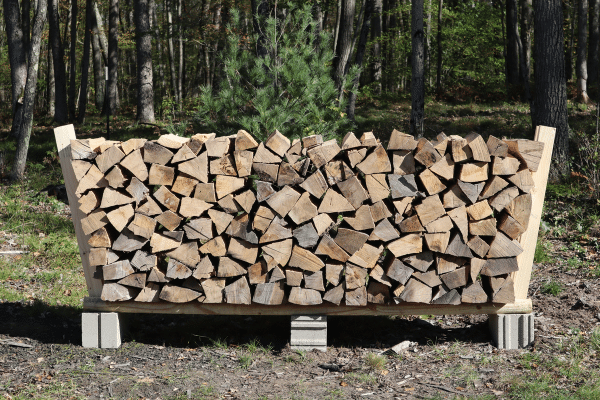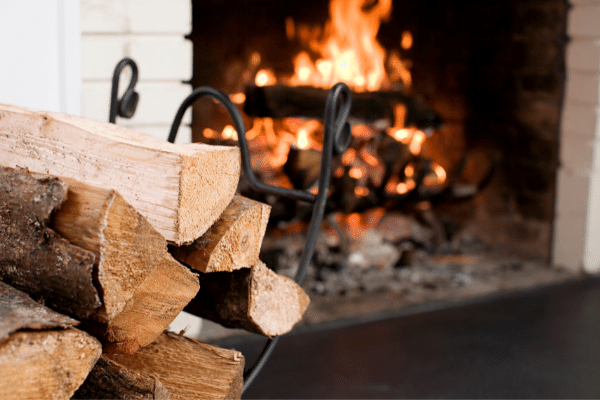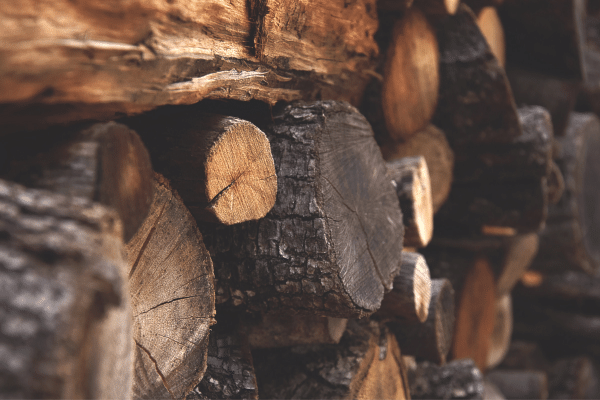- Home
- Types Of Firewood
- Is Bradford Pear Good Firewood
Is Bradford Pear Good Firewood?
This post may contain affiliate links so I earn a commission.
It's a unique and beautiful tree, but is Bradford Pear good firewood?
The benefits of this species are numerous, and while it has some characteristics that you might view as being less-than-desirable, ultimately, it's a versatile tree with many different uses.
If you have a Bradford Pear tree growing in your yard, you might just want to cut it down.
Don't worry, the wood makes fantastic firewood!
To learn more, let's take a closer look at the tree and the wood it produces.
What Is Bradford Pear?
The Bradford Pear is a member of the Rosaceae family of trees and the genus Pyrus.
It is native to China, Japan, Taiwan, and Vietnam, but is also commonly cultivated in South Carolina.
States like Indiana and Missouri are also home to large populations of the Bradford Pear.
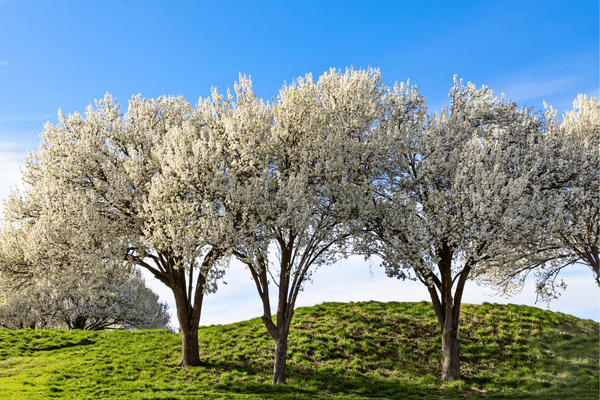
Interestingly, the Bradford Pear is not related to other pears.
Its fruit is not only inedible, but it is toxic to many species, including dogs.
If you are a dog owner with Bradford Pear on your
property, you'll need to be diligent about picking up the dropped fruit before
your dog can get to them.
With a lifespan of just 15-25 years, Bradford Pear has an extremely fast growth rate.
In less than an eight to ten-year timespan, Bradford Pear can gain 12-15 feet in height!
When all is said and done, the Bradford Pear can grow in height from 30-50 feet with a crown width of 20-30 feet.
Bradford Pear is considered an invasive species in many areas, regenerating itself quickly and readily.
This is done primarily through bird droppings.
It is often a landscapers favorite planting, with beautiful white flowers that bloom earlier than most other trees in the spring.
Although the flowers are beautiful, they smell horrible.
In fact, most people (including myself) describe the smell as something similar to rotting seafood.
Aside from the smell, the major downfall of Bradford Pear is, again, that it is so invasive it can overtake an area quickly.
It grows so quickly and is spread so easily by birds that native species are often unable to sprout beneath the crowded canopies when Bradford Pear takes over.
Ultimately, this can create an undesirable habitat for all kinds of birds and wildlife.
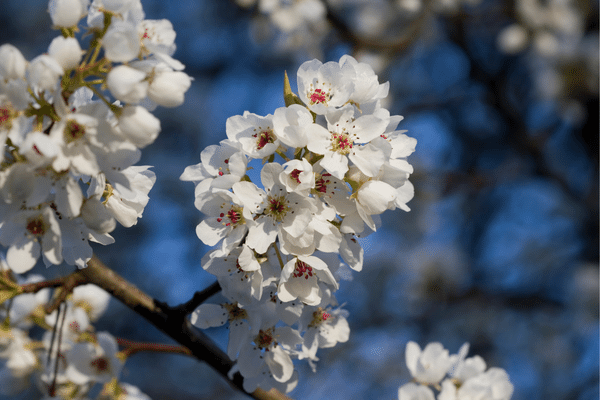
Another detriment to growing Bradford Pear is that it has an unstable limb structure as the crowns start to mature.
The limbs grow densely and closely together, and as their size and weight increase, these often become too much weight for the trunk to bear.
This results in the whole trunk splitting and leads to the death of the tree.
Is Bradford Pear A Hardwood?
Bradford Pear is considered a hardwood.
That said, its white or cream-colored wood is quite soft by comparison, which makes it a favorite among woodworkers.
This tree is deciduous in the fall, which is another logical reason to palace Bradford Pear among the other hardwood species you might be familiar with.
What Can You Do With Bradford Pear?
Bradford Pear is a versatile tree that is often used as a landscape planting.
It is used as a street tree, screen, and even as a border.
With its colorful fall foliage and white springtime flowers, it lends itself well to ornamental uses.
Bradford Pear is a great wood for smoking meats.
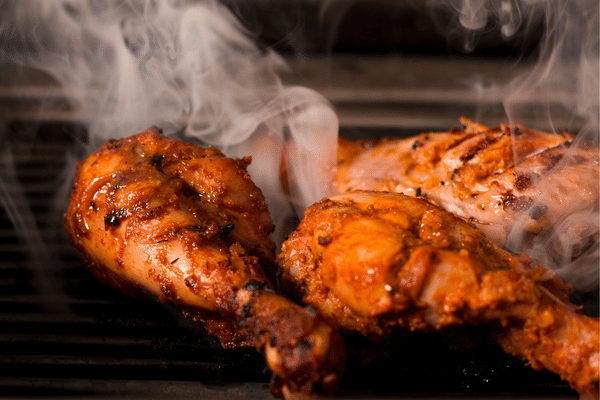
It produces minimal smoke but adds a wonderful flavor to most meats when smoked.
It just won't be as sweet as other popular fruit trees like apple, for example.
The softness of Bradford Pear, again, also
makes it a favorite among woodworkers.
It has a fine grain and delicate coloring, making it a superior choice for furniture building and cabinetry, along with wood turning and architectural millwork.
This wood is considered an excellent wood to carve by many.
It lacks a distinctive grain and can turn brown over time, though, which is really its only downfall in this regard.
And of course, if it's available in your area, Bradford Pear is a great choice for firewood.
It burns hot and intensely, offering a high rating of 26.5 million BTUs per cord.
Is Bradford Pear Good Firewood To Split And Season?
Is Bradford Pear good firewood to split or season?
Not really.
It is knotty and has a twisted grain, so it splits considerably hard.
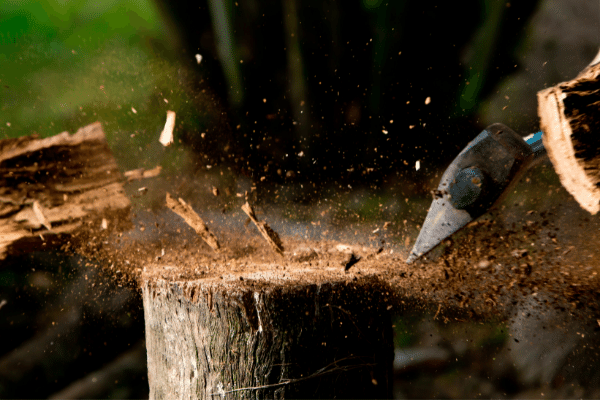
Many people do, however, take advantage of the fact
that in some cases, the tree actually splits itself.
That is due to its unstable limb structure.
In many cases, these splits only need to be sawed into stove-length wood, and, after seasoning, it's ready to burn.
A slow-drying wood, Bradford Pear often takes up to 18 months to fully season.
Some people choose to let this wood season even longer, for up to 24 months, claiming that the wood produces far more heat and less smoke with that additional drying time.
Because Bradford Pear is such a "limby" tree, it tends to produce a large quantity of limb wood.
These kinds of wood don't usually need to be split at all.
However, drying time increases with round wood, but it makes a great fire when properly seasoned.
How To Store Bradford Pear Firewood
The best way to store Bradford Pear is in an open shed.
Ideally, you will place Bradford pear in a shed that has a roof with well-ventilated side walls.
This will allow for ample airflow while keeping rain and snow away from the wood.
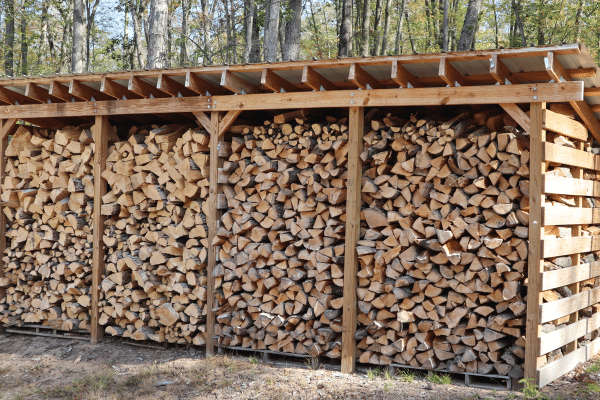
When stacking the firewood, start with
something that will keep the wood off the ground.
Old pallets work well, but if these aren't available, you could use any old available lumber you might have.
Try to keep at least three inches of airspace between the ground and the wood.
Cover the tops of these stacks with a tarp, or even better, beneath metal roofing.
This will keep rain and snow off the stacks to dramatically decrease the drying time.
Don't cover the wood completely though, as this will invite condensation and mold.
You just want to cover the top 1/3 portion of the stack to shed rain and snow, while allowing moisture to evaporate from the rest of the wood.
Burning Bradford Pear Firewood
If you're looking for a type of firewood that's sure to keep your fire going all night, Bradford Pear is an excellent choice!
It burns hot and long, producing a sweet aroma with minimal smoke.
Many campers like it because it produces the perfect amount of coals, making for a long lasting (and toasty warm!) experience.
Be careful, though – Bradford Pear can become stifling in smaller areas due to its high BTUs and burning intensity.
As with walnut and other fruit tree firewood, Bradford Pear produces minimal sparks and creosote.
With proper drying time, you'll love the results of burning Bradford Pear firewood.
Is Bradford Pear Good Firewood - Overall
Despite its drawbacks (such as the toxic nature of its fruits for dogs), Bradford Pear is a versatile tree with countless uses.
It can provide firewood and offers a gorgeous aesthetic that can enhance anyone's landscape.
The pros of this incredible tree shout louder than any cons listed above – it truly is worth applauding (or maybe even just planting!).
There are few, if any, trees that match the prestigious nature and versatility of the Bradford Pear - yet another wonderful wonder of nature!
